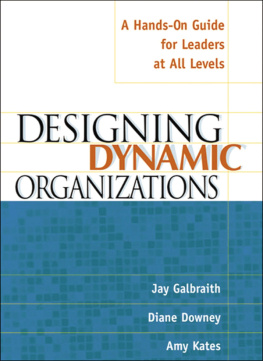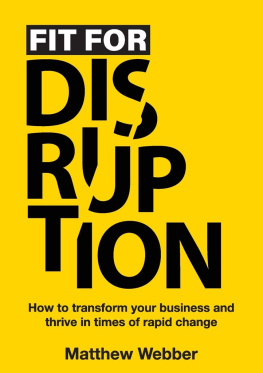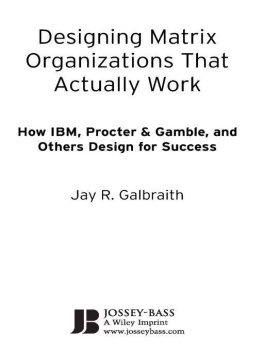In this ebook edition, please use your devices note-taking function to record your thoughts wherever you see the bracketed instructions [Your Notes] or [Your Response Here]. Use your devices highlighting function to record your response whenever you are asked to checkmark, circle, underline, or otherwise indicate your answer(s).
CASE STUDY
G ardenville had never experienced anything like the night of November 27. At 7:00 P.M. the main water line burst under Duggal Street, and the basements of many of Gardenvilles shops and homes quickly began to fill with freezing water. At 9:00 P.M. a fire broke out during the second shift at the factory, which was located just on the edge of town where many of the towns Mexican immigrants worked. Most of the volunteer fire department was downtown blocking off streets and helping the utility crews when the call came in about the fire. Half the firefighters were sent over to the factory, and a call for assistance was made to neighboring towns.
Dan Roskobev was one of the first to arrive at the factory. In his twelve years on the first aid squad, he had never seen such confusion. The fire was blazing out of the upper windows on the east side of the building. People were milling about in the 20-degree temperatures, many without coats. Some people looked hurt and were bent over, crying. Others were calling out in Spanish for someone to help the workers who might still be in the factory. Everyone seemed stunned.
The leader of Gardenvilles emergency services crew was away for the Thanksgiving weekend. The firefighters were preoccupied with the blaze. Dan decided somebody had to take charge. He asked one of the firefighters to break into a small restaurant that was dark and locked for the night. At least it was a place to get people inside, somewhere warm where he could begin to triage those who were hurt and needed to get to the hospital. Over the next four hours, he tended to minor burns, directed people to find blankets and supplies, and organized car pools among the onlookers to get people to the hospital. He coordinated translators to interpret when the other first aid squads arrived, and when the owner of the restaurant showed up, he convinced him to make coffee for everyone.
That week, an editorial in the county newspaper lauded Dan as a true hero. It also called for better emergency services resources, training, and coordination, noting, Our county is not prepared for a major disaster. We cant always count on having a hero show up at the right time.
This is not an uncommon story. When disaster strikes, people step up to the job that needs to be done. They pull together resources that are in short supply, coordinate the actions of others, and make fast decisions. We hail them as heroes. Of course, what works in a crisis is an inefficient and ineffective way to operate all the time. On a day-to-day basis, we count on organizations, not heroes, to ensure that resources are in the right place when needed, and that people have the right skills, tools, and support to carry out their jobs.
Many managers in businesses today complain that they feel as though they are fighting fires all the time. They are continually focused on short-term problems without a chance to pull back and think through the consequences of options and decisions. Rather than analyzing strategic opportunities, planning for business growth, or developing their people, they are caught up in day-to-day doing.
These pressures often come from external forces. As a manager, you may not face natural disasters with lives at stake in your everyday work, but you often must react quickly to challenges. If youre in a mature company, you probably need to respond to new competitors, consolidations, mergers and acquisitions, global expansion, and e-commerce. If you are a leader of a start-up, you may be struggling with building an infrastructure that will support rapid growth while trying to avoid unnecessary bureaucracy. On top of this, you may also be faced with higher than desired turnover and a shortage of talent to draw upon in the employment marketplace.
Too often, however, it is internal forces that keep managers from attending to long-term, strategic business challenges. Issues that should be resolved at lower levels and decisions that should be made at the front line float up to the leadership level. More time is spent on smoothing internal frictions than on customers, markets, and competitors. Yet, few managers feel confident in their own ability to shape their organizations to be more effective. A survey of the 441 fastest growing U.S. businesses conducted by PriceWaterhouseCoopers in the summer of 2000 found that 32 percent of CEOs believed that their inability to manage or reorganize their business could be an impediment to growth during the coming year. Only 10 percent of CEOs felt that way in a similar survey conducted in 1993.
As a leader, you have very few levers of change in your organization. Three key levers are setting the business strategy and vision, choosing the players on the executive team, and designing the organization. Your strategy provides the organization with direction and purpose. The quality of your executive team ensures leadership is evenly distributed and determines how well you sleep at night. The organization design defines the structure, processes, metrics and reward systems, and people practices that will ensure that individual and organizational energy is focused on those activities that support the achievement of the strategy. All levers are equally important, but organization design is frequently the lever given the least attention. If youre reading this book, you may already believe in the value of organization design. But you still may be wondering whether organization design is relevant in a world that is changing so rapidly.







